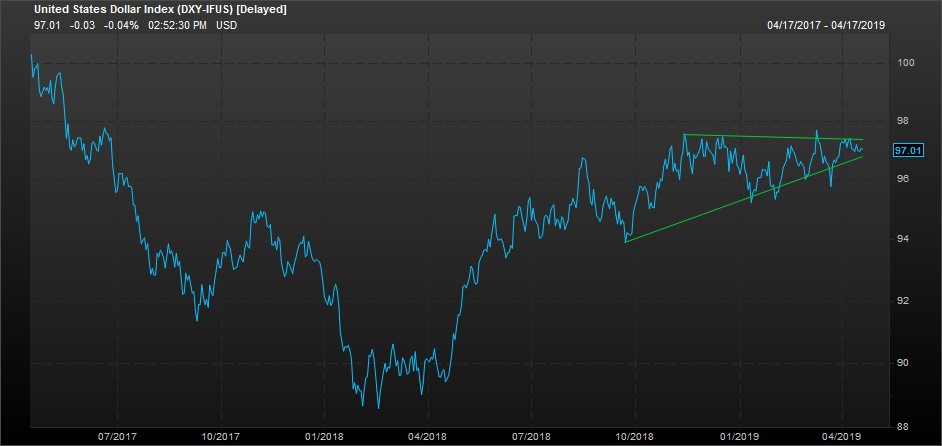Bryce coward writes…..
The US dollar is on the cusp of making a major move. The question is which way will it go, higher or lower? The directional movement of the US dollar will have significant asset performance implications once the tug of war between dollar bears and bulls is resolved.
The US dollar index has been consolidating its 2018 gains for the better part of six months and is currently in the process of forming what market technicians call an ascending triangle formation. It’s supposed to be a bullish pattern, but the reality is that technical analysis rules of thumb rarely stand up to statistical tests of significance. Regardless, what the pattern tells us is that supply of dollars emerges as the US dollar index approaches 98 and demand emerges as it approaches 96.5. The fact that the triangle is narrowing simply indicates that one of the two sides will prevail soon.
Setting aside the chart pattern setup for a moment, we also observe an historically very low level of volatility between the US dollar and its major currency pairs. In fact, our FX volatility index (which is just the average annualized volatility of the US dollar vs six other major currencies) stands at just 5.2%, a level that has been reached only four times in the last 40 years or so. Since FX volatility is mean reverting – hovering between about 4-14% pretty much all the time – we have every reason to expect FX volatility to resurface sooner rather than later.
The coiled springs of supply and demand points converging and historically muted FX volatility means the US dollar could be in for a fierce move in one direction or the other. For asset allocators, this has huge implications for how one ought to position a portfolio. The three asset classes most at risk of dynamic out or underperformance based on the direction of the dollar move are US small caps, emerging market stocks, and gold.

Read Full article below